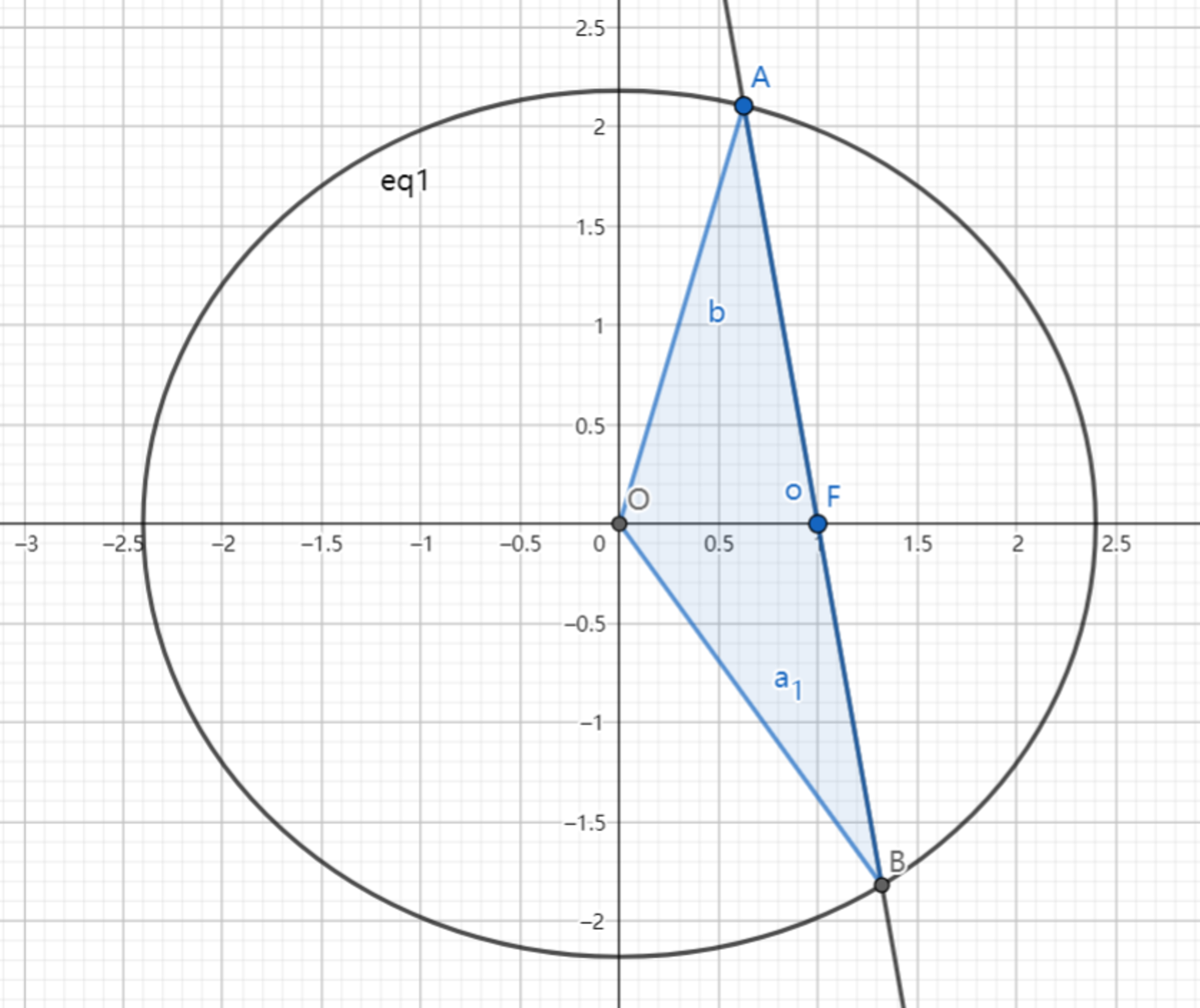SAT1000 - P819

As shown above, given that F ( 1 , 0 ) is the right focus of the ellipse: a 2 x 2 + b 2 y 2 = 1 ( a > b > 0 ) , O is the origin.
If for all lines passing through F which intersect with the ellipse at point A , B , the following inequality always holds:
∣ O A ∣ 2 + ∣ O B ∣ 2 < ∣ A B ∣ 2
Then find the range of a .
If the range can be expressed as: ( l , + ∞ ) , submit ⌊ 1 0 0 0 l ⌋ .
Have a look at my problem set: SAT 1000 problems
The answer is 1618.
This section requires Javascript.
You are seeing this because something didn't load right. We suggest you, (a) try
refreshing the page, (b) enabling javascript if it is disabled on your browser and,
finally, (c)
loading the
non-javascript version of this page
. We're sorry about the hassle.
2 solutions
Let the position coordinates of A be ( h , k ) . Then those of B are
( a 2 − 2 h + 1 2 a 2 − h ( a 2 + 1 ) , a 2 − 2 h + 1 k ( 1 − a 2 ) )
The given condition yields
( 3 a 2 − 1 ) h 2 − 2 a 4 h + ( a 2 − a ) 2 < 0
So the discriminant of the equation must be negative definite :
a 6 < ( 3 a 2 − 1 ) ( a 2 − 1 ) 2 ⟹ 2 a 6 − 7 a 4 + 5 a 2 − 1 > 0 ⟹ a 2 > 2 . 6 1 8
Hence a > 1 . 6 1 8 ⟹ l = 1 . 6 1 8 ⟹ ⌊ 1 0 0 0 l ⌋ = 1 6 1 8
If F ( 1 , 0 ) is the focus of the ellipse, then b 2 = a 2 − 1 , which makes the equation of the ellipse a 2 x 2 + a 2 − 1 y 2 = 1 .
The inequality ∣ O A ∣ 2 + ∣ O B ∣ 2 < ∣ A B ∣ 2 always holds when ∠ A O B is always an obtuse angle. ∠ A O B will be at its smallest when A and B are on the vertical line x = 1 , and ∠ A O B will start to be a right angle (not obtuse) when y = 1 . Substituting x = 1 and y = 1 into the equation of the ellipse a 2 x 2 + a 2 − 1 y 2 = 1 gives a 2 1 + a 2 − 1 1 = 1 , which simplifies to a 2 − a − 1 and solves to a = 2 1 + 5 = ϕ .
Therefore, the inequality ∣ O A ∣ 2 + ∣ O B ∣ 2 < ∣ A B ∣ 2 always holds when a > ϕ , so l = ϕ , and ⌊ 1 0 0 0 ϕ ⌋ = 1 6 1 8 .